To what extent the developments of creative clusters promote the construction of urban spatial structure in contemporary Ningbo?
Posted: May 31st, 2009 | Author: Xu Shengxi | Filed under: creative industries | Tags: creative cluster, creative industry, urban spatial structure | No Comments »Introduction
The term ‘Creative Industry’ was put forward in UK and has grown up in western countries in 1990s (Rossiter 2008). In UK, creative industry is defined as “those industries which have their origin in individual creativity, skill and talent and which have a potential for wealth and job creation through the generation and exploitation of intellectual property†(Department for Culture, Media and Sport (DCMS) 2002). It covers design, art, architecture, advertising, film, music, video and soft ware, etc (UK Creative Industry n.d.). Creative industry is a new form of economy according to its contributes to economic development. Creative industry started in early 2004 in China has established its formal status and outline since the Eleventh-Five Year Plan in 2005 (Rossiter 2008&Keane 2009).
Cluster originally comes from economic field which means “collectivism and cooperation†(Keane 2009, p.221). Creative cluster is the geographic assembling of creative industry and it includes “non-profit enterprises, cultural institutions, arts venues and individual artists alongside the science park and the media centre†(Porter, 1998 & What Are Creative Clusters n.d.). Besides art creativity and economic earning, creative clusters also contribute to the urban spatial structure, which can be understood as the structure of clusters by using urban public space (Anas, Arnott &Small 1997). Urban spatial structure refers to the distribution and integration of urban elements; it means the shadow cast of urban economic structure and social structure (Lin 2004). To some extent, urban spatial structure can be seen as the spatial form of the development of urban social economy (Ma & Chu 2009).
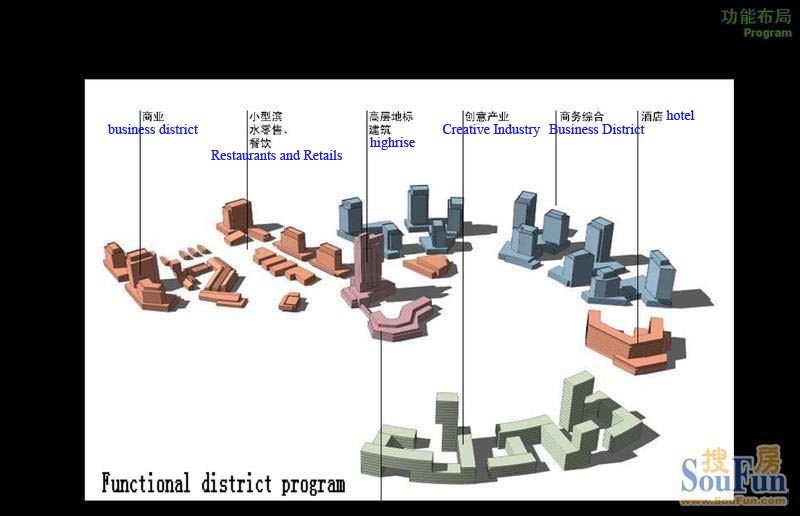
Creative industry develops its early stage in Ningbo; however, it is experiencing a rapidly and sustainable growth (Nie & Wang 2008). The profound economic basis, the supportive policy which proposed in Eleventh-Five Year Plan in 2005 and the long history of commercial manufacture contribute to the development of creative industry in Ningbo (ibid). However, the long-term of “Made in China†brings Ningbo good reputation of Manufacture City but leads to the diversionary embarrassed circumstances which caused by the lack of creative dynamic and independent brand (ibid). Furthermore, perfect creative cluster has not been established in Ningbo because of the lack of creative labour and advanced ideas (Che & Guo 2009).
This paper aims at evaluating to what extent the developments of creative clusters promote the construction of urban spatial structure in Ningbo. Firstly, it examines creative clusters’ effects on adjusting the distribution of urban function districts and the reform of urban structure; secondly, it evaluates the effects on urban economic operation and its contribution to the rebuilding of urban relationship made by the clustering of distinctive industry.
1. Effects on Urban Space
1.1 Adjust the Distribution of Urban Function districts
Michael Keane concludes that “the economic logic of clustering…has been distilled into assorted creative parks, bases, incubators, industrial districts, creative cities, and creative regions†from Michael Porter’s work (cited in Keane 2009, p.226). As Keane (2009) considers creative industry could contribute to create wealth, reconstruct urban space, revamp traditional culture, develop clean service industry and provide more added values. As VanHeur (2009) claims that cluster have impacts on the agglomerations of space. The rise of creative clusters has positive effects on urban spatial structure of Ningbo as it contributes to adjust the distribution of urban functional areas (Che, 2009). The Deputy Director of Standing Committee of Zhenhai District Municipal People’s Congress of Ningbo, Mr. Gao Linxia (2006) points out that it is very important to properly deal with the inter-relationship between urban functions and urban space property in strategy of urbanization. Because it refers to the reasonable arrangement of urban space, the strength of urban functions, the plenitudinous use of urban resources and the improvement of urban efficiency (ibid). Official statistics shows that from 1988 to 2006 secondary industry, commercial manufacture industry, accounts for the most proportion in Ningbo’s economy and the second important is agricultural industry, service industry occupies the smallest proportion (Industrial Structure of Ningbo 2008).
(planning of new districts)
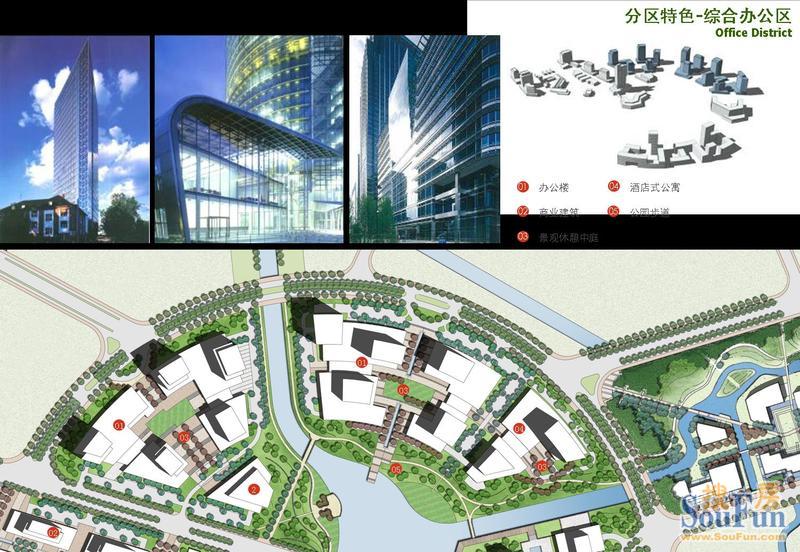
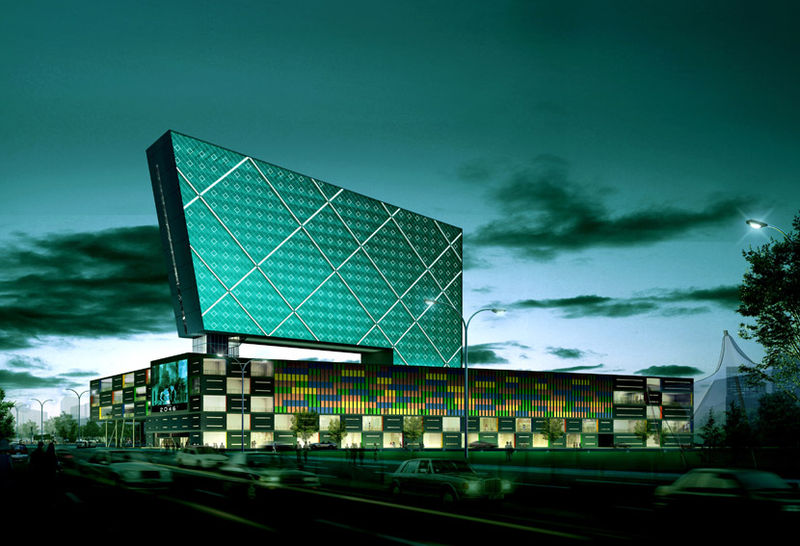
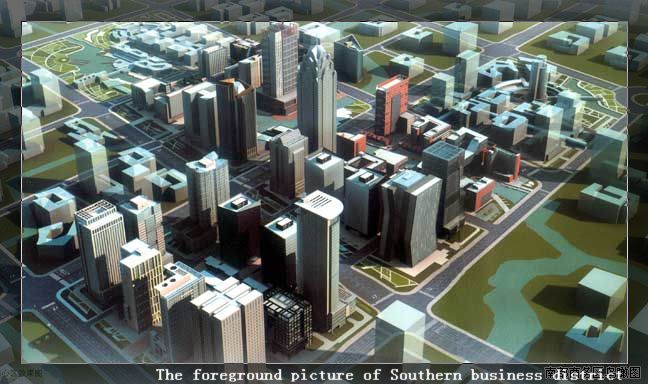
Compare to Shanghai, the advanced creative city of China, Ningbo has inadequate creative labour and market demand (Che, 2009). Creative industry in Shanghai shows characteristics of international, urbanisational and spiry (ibid). In contrast, creative industry in Ningbo is experiencing the early stage. However, Ningbo used to focus on export trade and commercial manufacture, which can become the unique feature in positioning Ningbo as creative industry and innovation undertaking base as they provide abundant economic and cultural foundations (ibid). In nowadays industrialization in Ningbo is experiencing stable increasing periods. Entering WTO brings opportunities as well as threatens to China; therefore, upgrading industries is carried out to response to the challenges (Keane 2009 & Industrial Structure of Ningbo 2008). Moreover, urbanization and industrialization supplement each other. Ningbo government plans to optimize the entire allocation and development pattern of industry (Industrial Structure of Ningbo 2008). The new strategy of urbanization of Ningbo can be summarized as “eastern extension (Dong Kuo), northern combination (Bei Lian), southern planning (Nan Tong Chou) and central upgrading (Zhong Ti Sheng)†(ibid). The core of strategy is promoting the unification of development of industry and district in order to upgrade the integrated strengthen of Ningbo (ibid). The establishment of Creative Technology Park (Chuang e Hui Gu) aims at accomplishing the transition from city-level to national -level through becoming the radiant point of regional independent creation. Additionally, the aim of establishing industrial design street is taking the advantages of Ningbo traditional industry as a reference to cultivate new distinctive district.
1.2 Rebuild Urban Structure
The establishment and improvement of clusters accommodate to the demands of urban development in Ningbo (Huang 2002). It is very important for Ningbo to develop into the economic centre of southern Yangtze River Delta as it is the hinge of traffic and economy in this area (ibid). Not only has the objective requirements of regional economic development, but also Ningbo’s own condition forces it to accelerate its pace of becoming megapolis(ibid). The central city proper of old Ningbo was very small as it assembled along the estuary of the three rivers (Liu & Wang 2004). In nowadays, the estuary of the three rivers has been experienced a tremendous transition of urban spatial structure along with the modification of Old Bund, establishment of urban planning exhibition and opening of Ningbo art gallery. As a result, the primary framework of megapolis has formed and the situation of closed urban functions has been broken down (Gao 2006).
Dr. Guo Jing (2009), the staff of Ningbo Culture and Creative Industry Base in Ningbo Institute of Technology of Zhejiang University, points out that the development of Ningbo urban space is tremendous according to its outlook of master planning. He (ibid) takes the cultural project, book city, as an example. The book city is a non-profit project which is sponsored by local government, additionally; it is located along the estuary of the three rivers, Yuyao River, Fenghua River and Yong River, where was once the location of five rice storage houses (ibid). Such a project which is enormous and invested a large amount of money is scare in the world. In addition, as Mr. Che (2009), the chairman of the director of Ningbo Creative Industry Association, introduces that the northern part of Ningbo city, Ci Cheng, is now growing its creative cluster based on its historical and cultural background. Mr. Che (ibid) emphasises Ningbo should be established as creative city for starting new business, Ci Cheng takes advantages of its outdated building and cultural heritages to explore tourism, meanwhile, there are many handiwork studios arise to contribute to create new undertaking. Mr. Gao Lingxia (2006) points out that the mode of interacting, complementing, collaborative developing among Ningbo central region and circumjacent areas is becoming the new trend of urban development.
1.3 The Deficiency in General Planning
Industrial cluster is adapted and applied by governmental planning since it is considered as a respond to solve the insufficiency of creative clusters agenda (Pratt cited in VanHeur 2009, p.14). The development of creative clusters has an interactional relationship with the general planning of urban spatial structure. On the one hand, Michael Keane (2008) considers the general planning, which is assisted by government, is the core element in deciding the success of creative clusters. Creative industry refers to the trans-boundary integration and upgrade of multi-industries (Kuang & Jiang 2008 & Keane 2008). Government assist the planning of creative space through providing tax preference and legal protection (ibid). In term of Ningbo, old planned economy still has profound effects on managing and operating system, as Mr. Che (2009) mentions that creative industry in China which lack precise and strict definition, even in Beijing, to some extent, will sweep the whole cultural industry into creative industry. Chinese officers prefer to expand the coverage of industry but pay less attention to creative clusters’ integrated ability on districts (ibid). Consequently, Mr. Che (ibid) claims that the extension of creative industry should be decreased but the contents of it should be increased.
On the other hand, in nowadays creative clusters make limited contribution to deploy urban construction despite the progress of urban restructure. Dr. Guo Jing (2009) claims that Ningbo is relatively conservational in culture field; furthermore, the propaganda of creative culture has limited impacts. For example, although the first loft of Ningbo, Loft 8 comprises many design studios, advertising companies and exhibition areas, its propaganda is too weak to integrate the spatial network of its district. Zane Zhu (2009), the host of No Space which is one of the famous design studios in Loft 8, claimed that their exhibition area has limited effect in Ningbo despite they had already successfully held many art exhibitions like paintings and photographs. Additionally, these exhibitions are non-profitable and no relation with commercial activities. Relative limited target audience and no-profitable characteristic causes Loft 8’s inadequate assembly, consequently, it has not contributed enough to urban spatial structure.
2. Effects on Urban Economic Structure
2.1 Adjust to the Operation of Urban Economic Function
Urban spatial structure is the manifestation in space of urban economic structure, consequently, to meet the needs of urban economic operation plays an important role in urban spatial upgrading and restructuring (Lin 2004). Mr. Che (2009) emphasises the growth of economic districts is suitable for the demands of urban economic operation; the positive effects on real estate by the improvement of creative clusters is one of the marked manifestation. To a certain degree the development of creative clusters interacts on the growth of real estate of Ningbo. As Mr. Che (2009) points out that there are four forms of creative clusters in Ningbo: first one is newly established industrial parks such as Creative 128 (Chuangxin 128) of Yinzhou District and Creative Technology Park (Chuang e Hui Gu) of Zhenhai District; secondly, rebuild Creative Park like loft 8 and Hefeng Creative Square which based on disused old Hefeng Cotton Mill; thirdly, commercial creative parks with government support, such as the Industrial Design Creative Street; forth, independent enterprise which leads new brand in its industry in Ningbo, such as Ningbo Tianzhiying Film, Video and Animation Corporation (see the video please cilck here). Mr. Che (ibid) emphasises that all these projects are related to real estate. Keane(2009) claims that the collaboration between real estate developers and government motivate the adaption and extension of creative clusters.
(old building of Hefeng Cotton Mill)
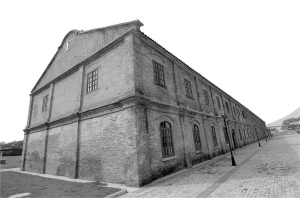
Danny Butt (2008) considers that the value of real estate arose accompany the concentration of artists. It means the entering of creative companies, the development of art activities and the gathering of creative labour contribute to increasing art value of the land (ibid). Moreover, Michael Keane (2009) claims that real estate developers could guide the concentration of creative industry, in addition, gentrification accompanies the emergence of service function for consumption, such as bars, book stores and restaurants. As a result, the used-land for this cluster will increase in value (ibid). Gentrification is a pheromone about urban space, which firstly means the upgrade of urban centre in the process of re-urbanization in western countries (Wetzel 2004). The inflow of creative population in the milieu of Design College and galleries result in the growth of service industry as the international artists require for a utility area to meet their needs for life and leisure (Keane 2009). Therefore, the commercial circulation which based on creative cluster has scabbled.
However, the development of creative industry in China, to a certain degree, is becoming the representative of real estate. As Chen Shaofeng (2008), the assistant dean of Institute for Cultural Industries of Pecking University, claims that there is a mistaken idea in the growth of creative clusters in China. He mentions creative industry is usually operated as real estate program according to governmental policy about land supervision (ibid). It leads to the transition of creative cluster from Creative Park to Real Estate Park, and weakens cultural power as well as distorts the original meaning of cultural creativity though it brings economic profits (ibid). Creative clusters seldom create new ideas; they even become image-program of government (Rossiter 2008 & Chen 2008).
2.2 The Concentration of Distinctive Industry Reform Urban Relationship
The gathering of distinctive industry would promote the rise of enterprises and the improvement of industrial dimensions (Che, 2009). The systematic industry cluster can get access to be the symbol of certain districts and form nationwide radiation (ibid). In term of Ningbo, the first newly creative development zone, Creative Technology Park (Chuang e Hui Gu) which locates in Ningbo University Park, successfully absorbs many advertising, soft ware, animation, industrial design corporations with assistance from local government. Tax preference policy, rewards for research and development motivate investment pour in creative cluster and make it have more dynamic in growth (ibid). Creative industry is related to citied industry and has characteristics of knowledge-intensive. The development of clusters results in positive transition of urban structure. In term of capital investment, it influences anthropology flow because creative industry gathers human ideas and creativities. Adrian Blackwell (2008, p. 48) mentions in today’s China there are two basic extensions mode of urban outer suburbs, which are “poorly controlled village intensification and expansive new development zonesâ€. Rossiter (2008) considers the restructure of various districts will happen in a certain scale. In some cities with development scale of creative industry, like Beijing and Shanghai, the new economic form based on urban historical heritage creates new profits, for instance 798 in Beijing and Tianzi Fang in Shanghai. This kind of urban heritage is labelled history and Chinese characteristics, moreover, they are reformed as the new artistic space for consumption. This kind of creative cluster, which is considered as “a cultural archipelagoâ€, is able to re-mode the relationship among government, enterprises, localite, academics and cultural producers (Blackwell 2008, p.48 & Keane 2009, p.221).
Improving urban distinctive industry has to form its unique industrial position. Conurbation like Beijing, Shanghai and their environed cities in China had already attached importance to industrial position. For example, Beijing has been applying itself to construct the cultural and sporty central which links folk-custom area, fashion business district and Olympic subject construction together; Tianjin, the outer city of Beijing, recurs to the abundant tourist and geographical resource of Beijing to improve urban infrastructure construction; inland cities like Chengdu and Chongqing get help from national western plan in developing creative industrial design; second-tier cities like Hangzhou and Nanjing, which are similar to Ningbo, focus on growing animation, software, design, service and real estate housing for new art creativity which based on disused factories (Keane 2009). Mr. Che (2009) considers the core power of developing industry is commercial promotion; in addition, the formation of urban distinctive industry which is also identified as one of the important system of industrial commercialization, is an economic circulation. Mr. Che (ibid) also introduces that an industrial design street in Jiangdong District is being built and it is a commercial creative park sponsored by governmental institution. Officials plan to compartmentalize an area in downtown and establish serials of separated buildings in order to form natural block (ibid). Mr. Che points out that Tian Zi Fang of Shanghai could be the successful mode for them to use as a reference according to its combination of old alleys and new creative activities, meanwhile, Tian Zi Fang directly links producing and selling as the design studios there are also the places they display their goods. In term of the Jiangdong industrial design street, the downstairs there will be the selling hall and display the products from upstairs, the design zone.
2.3 The Deficiency of Creative Clusters’ Contribution to Urban Spatial Structure
However, in Ningbo relatively mature and large-scale creative clusters have not arose in its primarily develop, which results in urban spatial structure partly registers as unsystematic and dispersive (Che, 2009). The first reason of this phenomenon is severely inadequate of talented people in creative industry. In spite of Ningbo is one of the most important manufacture base, it is weaken in self industrial design (Tang 2008). Even in famous emprises like Ningbo FOTILE Kitchen Ware Co., Ltd, there is an inadequate of professional designer (ibid). Furthermore, creative industry is considered as intellectual property which refers to brainwork of creative labour. The development of creative industry in China based on cultural fundament, including Chinese traditional culture and exotic culture. Dr. Guo Jing (2009) considers it is difficult to integrate Ningbo, such a relatively conservational city in culture, and creative industry, such an industry needs large amounts of new objects and notions. As a result, Ningbo has not finished the establishment of cultural creative industry which contributes significantly to urban spatial structure (ibid). Mr. Che (2009) claims the large-scale clusters and distinctive industry have not formed in Ningbo. Additionally, as culture account for a large proportion in China’s creative industry, Dr. Guo Jing (2009) mentions that the term culture needs a long period for being observed. Since creative industry has been experiencing early stage in Ningbo, it has not contributed much to urban spatial structure (Guo 2009 & Che 2009).
Conclusion
Creative industry has been leading the development of creative economy since its growth in 1990s. In contemporary China, where is experiencing a complicated transition in economic, urban and social areas, government places great emphasis on creative industry as it relates to the development of national soft power. Ningbo is the traffic and economic hinge of Yangtze River Delta. There is a long history of industrial manufacture in Ningbo. Economic basis, geographic condition and future urban planning require Ningbo to develop its creative industry in order to promote the increasing of economy.
Creative cluster is the geographic concentration of creative industry. Urban spatial structure means the distribution and integration in space of urban elements. It represents the spatial situation of urban economic and social structure. Creative cluster in Ningbo is now developing in the primary stage. Under the assistance of Ningbo government, there are four main forms of creative clusters, include new established creative industrial parks, loft, innovation undertaking parks and independent enterprise which leads new brand in its industry in Ningbo.
The development of Ningbo’s creative cluster interacts with the construction of urban spatial structure. On the one hand, the rise of creative clusters adjusts the districting of functional areas, reform the urban structure. On the other hand, urban general planning is the core element of deciding creative clusters succeed or not. In Ningbo, lack of creative labour and creative concept lead to creative cluster has not formed large-scale industrial parks. As a result, creative clusters have limited impact on urban spatial structure in contemporary Ningbo although it contributes to district the functional areas and reform the urban structure. However, Ningbo has potential in developing creative clusters as the support of officials and the economic situation. It is important to focus on the four forms of creative clusters in future research in order to excogitate the appropriate proposal of improving Ningbo creative industry.
References
Anas, A & Arnott, R & Small, K A 1997, Urban Spatial Structure, The University Of California Transportation Center, University Of California At Berkeley. Retrieved may 19, 2009, from http://www.uctc.net/papers/357.pdf
Blackwell, A 2008, ‘Inverting the Cultural Map: Peripheral Geographies of Beijing’s Creative Production’, Urban China vol.33, pp.48-51.
Butt, D 2008, ‘Can You Manufacture A Creative Cluster?’ Urban China. vol.33, p.33.
Carriço, Mónica; de Muynck, Bert; Rossiter, Ned (eds) 2008, [Special Issue: ‘Creative China: Counter-Mapping Creative Industries’],Urban China ,vol. 33.pp.24-25.
Che, Xiao Fang 2009, Interview, 20 May. for those who want his contact details: mobile: 13906680232
Chen, S F 2008, ‘Ten Mistaken Ideas of Creative Clusters’, China high and new technology industrial development zone, vol.3, pp.18. China Academic Journal Electronic Publishing House. 陈少锋,2008, ‘创æ„产业èšé›†å›çš„å大误区’,ä¸å›½é«˜æ–°åŒºï¼Œ2008年第3期,pp.18
Department for Culture, Media and Sport (DCMS) 2002, Creative Industries Fact File, 2-4 Cockspur Street London SW1Y 5DH. Retrieved May 19, 2009, from http://www.culture.gov.uk/PDF/ci_fact_file.pdf
Gao, L X 2006, ‘Deal with the Relationship between Urban Functions and Urban Space during the Development of Urban Centre’, Sanjiang Forum, vol.4, pp.8-11. 高å²å¤ï¼Œ2006,’å®æ³¢ä¸å¿ƒåŸŽå¸‚å‘展ä¸åŸŽå¸‚功能与空间关系处ç†â€™ï¼Œä¸‰æ±Ÿè®ºå›, 第4期,pp.8-11.
Guo, Jing 2009, Interview, 13 May. for those who want his contact details: mobile: 15867390137
Huang,X G 2002, ‘The thought for Ningbo’s developing strategy’, Urban Studies, vol. 9 no. 4, pp.62-65. 黄兴国, 2002 对å®æ³¢å‘展战略的æ€è€ƒï¼ŒåŸŽå¸‚å‘å±•ç ”ç©¶ï¼Œ9å·ï¼Œ2004年第4期,pp.62-65.
Keane, M 2008, ‘Creative Clusters: Out of Nowhere?’, Urban China, vol.33,pp.34-35
Keane, M 2009, ‘Great Adaptations: China’s Creative Clusters and New Social Contract’, Journal of Media & Cultural Studies, vol. 23, no.2, pp.221-230.
Kuang, X M & Jiang J, ‘Prologue: Created In China— Bottleneck and Breaking Through of A Great Country in Industry Transition’, Urban China, vol.33, pp.18-19.
Lin, Y J 2004, ‘The Evolution and Optimization of the Urban Spatial Form of Ningbo’, Modern City Research, vol.12, pp.53-57. 林艳å›ï¼Œ2004, å®æ³¢åŸŽå¸‚空间形æ€æ¼”å˜è¿‡ç¨‹åŠä¼˜åŒ–ç ”ç©¶ï¼ŒçŽ°ä»£åŸŽå¸‚ç ”ç©¶ï¼Œ 第12期, pp. 53-57.
Liu, F L & Wang, R Y 2004, ‘Understanding of Ningbo City’s Urban Construction’, Urban Studies, vol.11,no.3,pp.79-83. 刘å‘良&王人扬, ‘一个城市å˜è¿çš„浓墨é‡å½©â€”——å®æ³¢å¸‚城市建设解读’,城市å‘å±•ç ”ç©¶ï¼Œ11å·ï¼Œ2004年第3期,pp.79-83.
Ma, W B & Chu, J F 2009, ‘Industrial Clusters and the Upgrade of Spatial Structure in Shanghai’, China Urban Economy, vol.1, pp.51-53. 马å´æ–Œ& 褚劲风 2009,上海产业èšé›†åŒºä¸Žç©ºé—´ç»“构优化。ä¸å›½åŸŽå¸‚ç»æµŽï¼Œ2009年第一期,pp.51-53.
Ned, R 2008, ‘Informational Geographies vs. Creative Clusters’, Urban China, vol.33, pp.32.
Nie, J L & Wang Q Y2008, ‘Investigation about Current Situation of Ningbo Creative Industry and Developing Strategy’, Market Modernization, vol.561, pp.213-215. è‚晶磊 &王秋艳, 2008, ‘å®æ³¢åˆ›æ„产业现状调查与å‘展战略’, 商场现代化,总第561期,pp.213-215
Porter, M E. 1998. ‘Clusters and the new economics of competition’. Harvard Business Review, pp.77–90. Retrieved May 19, 2009, from
http://www.econ-pol.unisi.it/didattica/ecreti/Porter1998.pdf
Tang, X D2008, ‘Industrial Design and Developing Strategy of Creative Industry in Ningbo’, Private Technology and Economy in China, vol.231.no.5, pp.38-39. å”先达,2008, ‘å®æ³¢å·¥ä¸šè®¾è®¡ä¸Žåˆ›æ„产业å‘展ç–略’, ä¸å›½æ°‘è¥ç§‘技与ç»æµŽï¼Œ2008年第5期总第231期, pp.38-39.
UK in Taiwan British Trade and Cultural Office n.d., UK Creative Industry. Retrieved May 1st ,2009, from
http://ukintaiwan.fco.gov.uk/en/doing-business/business-investment-in-uk/uk-business-environment/creative-industry/
VanHeur, B 2009, The Clustering of Creative Networks: between Myth and Reality, Urban Studies, vol.46, no.9.Sage Publications Ltd.
Wetzel, T 2004, What is gentrification? Retrieved May 19, 2009, from http://www.uncanny.net/~wetzel/gentry.htm
Zhu, Z 2009, Interview, 14 May. for those who want his contact details: mobile: 13777065961,video please click here
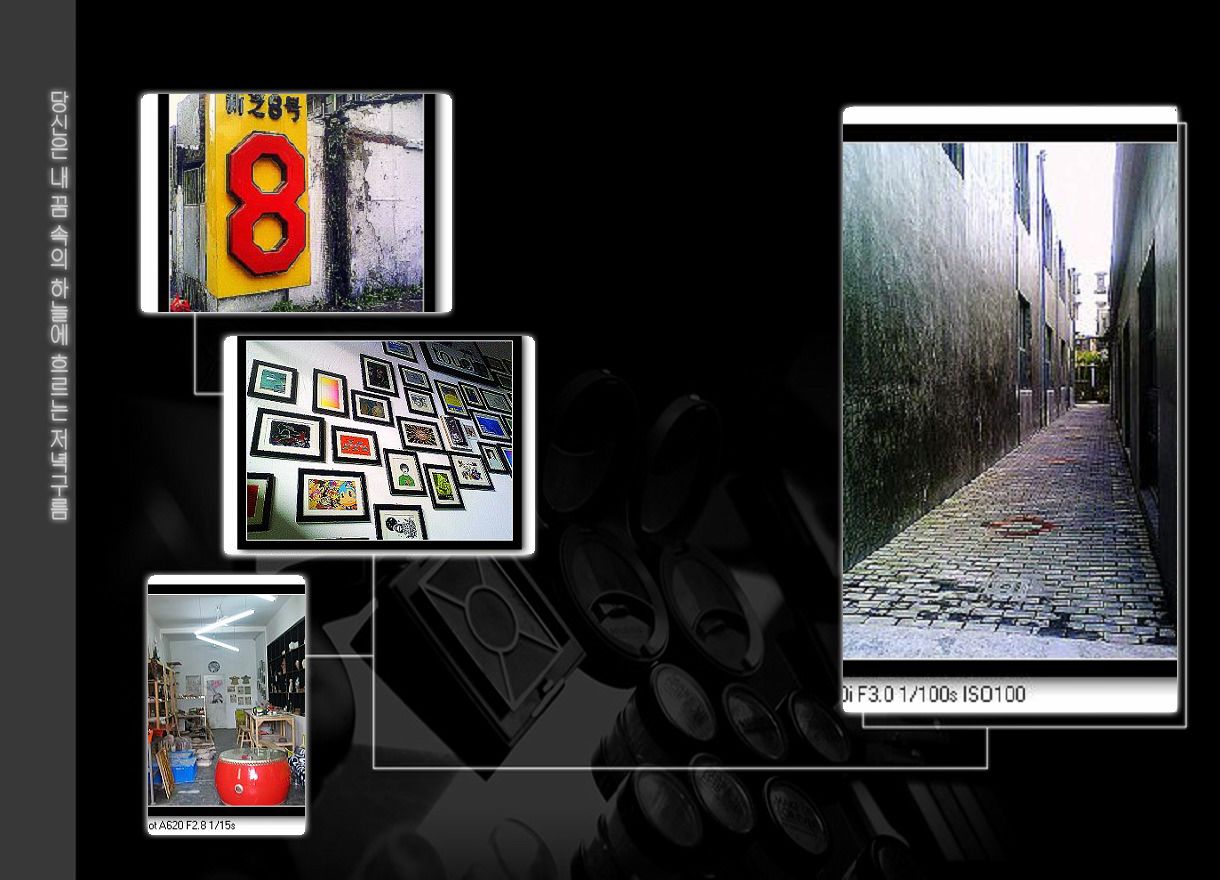


Recent Comments